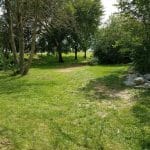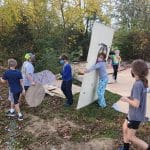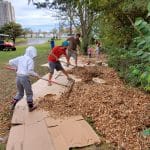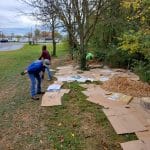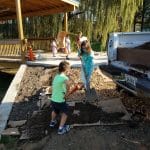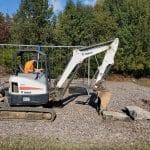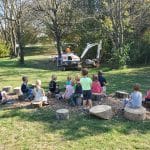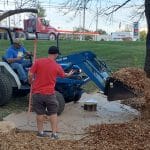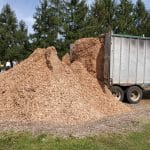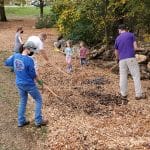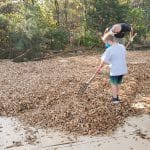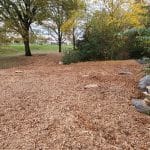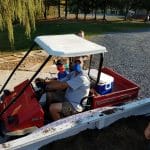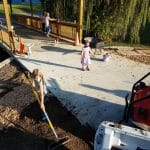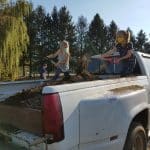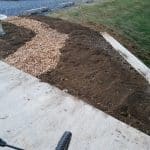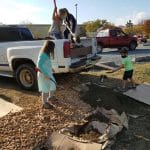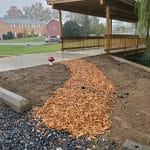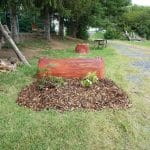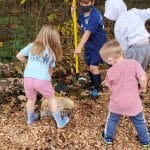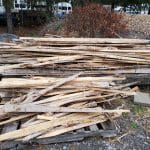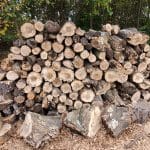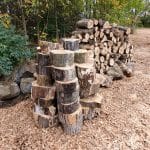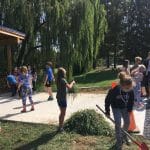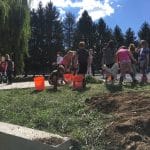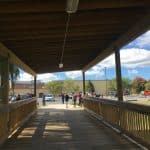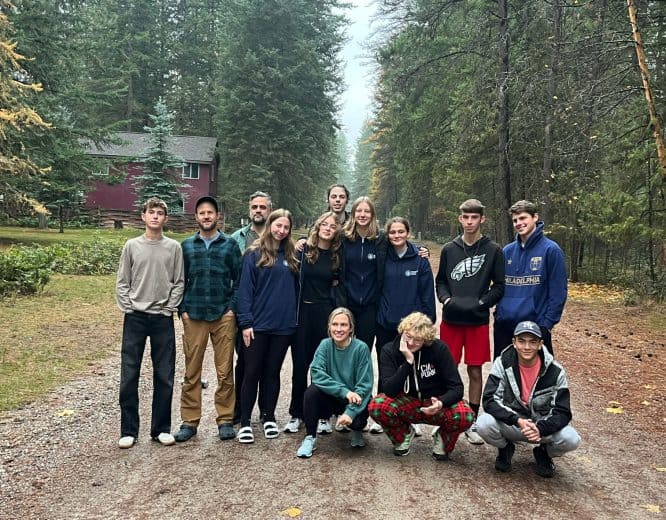Volunteers Move Outdoor Learning Vision Forward
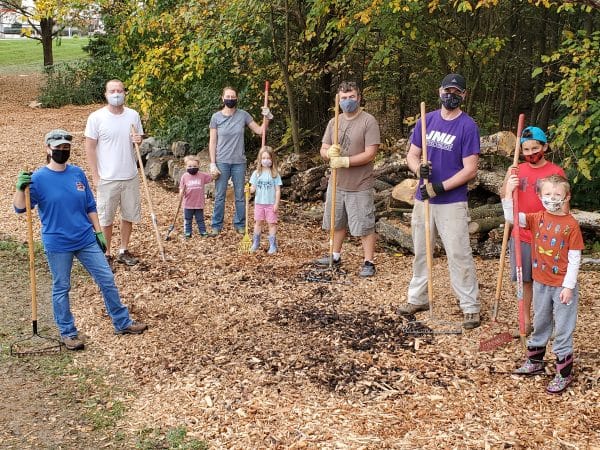
Thanks to more than 30 volunteers putting in dozens of hours over a recent weekend, learning in the outdoors is flourishing at Eastern Mennonite Elementary School. Outdoor classrooms are established and a bridge garden is ready for student gardeners. It’s all part of implementing the master plan for the renovated building which the school occupied inside early in 2020.
“The vision of the teachers and physical work by parents and students has come together beautifully,” says Maria Archer, principal. “Key has been all of the coordinating work by Kendal Bauman, beloved PE teacher with a ‘get ‘er done’ attitude.”
Bauman has been working with Archer and Lynette Mast, kindergarten teacher and long-time advocate for outdoor learning at the school to develop the vision for the EMES playground and additional outdoor learning area. They began planning, with input from all the teachers, even before the elementary building renovation began in summer of 2019.
Grades 2 to 5 each now have a designated outdoor learning classroom covered in wood chips to make it suitable for wet weather, and small stumps or “tree cookies” placed 6’ apart for COVID-safe spacing. Kindergarten and grade one already have outdoor learning space with a kitchen area, “wood fire” ring, and a water table.
Saturday work day
On Friday, October 25, Saturday, Dan Sandburg, EMS dad, brought his excavating equipment to prepare the spots that had been planned by teachers with student input. A first evening shift of volunteers began spreading wood chips while Bauman worked with children in the After School Program and other parents and students worked on the bridge garden. Saturday, a new crew of volunteers finished the jobs.
The garden by the school’s covered bridge brings a finishing touch to the structure that connects the school’s upper and lower buildings. The bridge provides a safe drop off area and outdoor learning space.
Finalizing the landscaping at the entrance to the bridge could have been done in a few hours by a landscaping crew. “But we saw potential for our students to help develop a vision and be part of the preparation and implementation of a garden,” explains Gini Trotter, peacebuilding teacher and K-8 counselor.
Getting students outside with their hands in the dirt is a part of the peacebuilding curriculum. Over the fall, students have helped to remove weeds and rocks, and joined conversations about paths and plants. Wood chips are now aligned to create a mud-free zone to and from the bridge for drop off and pick up.
Some whimsical fairy lawn ornaments, courtesy of Mr. Bauman and a campus storage shed, added a delightful surprise on a recent morning.
To wrap things up on Saturday, Bauman and Delbert Wenger, class of ‘82 and former EMS parent, spent another seven hours working up wood from trees that were felled during the renovation project or used on the playground fort. The pin oak and cedar scraps are great for firewood and available for donation toward the school’s sustainability fund. (Contact Kendal Bauman if you are interested!)
“The work day was a lot of fun,” says Bauman. “I enjoy bringing people together for outside activity and this has a bigger purpose and mission. The kids are so happy to see their parents at their school helping to create spaces that they are going to use daily. The volunteer support we get for projects is amazing.”
The full vision
The full outdoor play and learning spaces at EMES covers about three dedicated acres and will continue to evolve. It includes the bridge, waterway, a portion of the former tennis court and surrounding trees, riparian zone, playground with its Peace Path and fort, and grassy areas.
“It’s a privilege to have this area as part of our school experience,” says Archer. We know that all kinds of learning takes place, physically and emotionally, in addition to intellectually, when we go outside. And, our students are able to focus and enjoy inside learning better when they get outside at least twice a day.”
Earlier outdoor learning and play spaces were completed incorporating lessons and labor by middle school students to create climbing and jumping equipment made of logs, stumps and recycled tractor tires.

